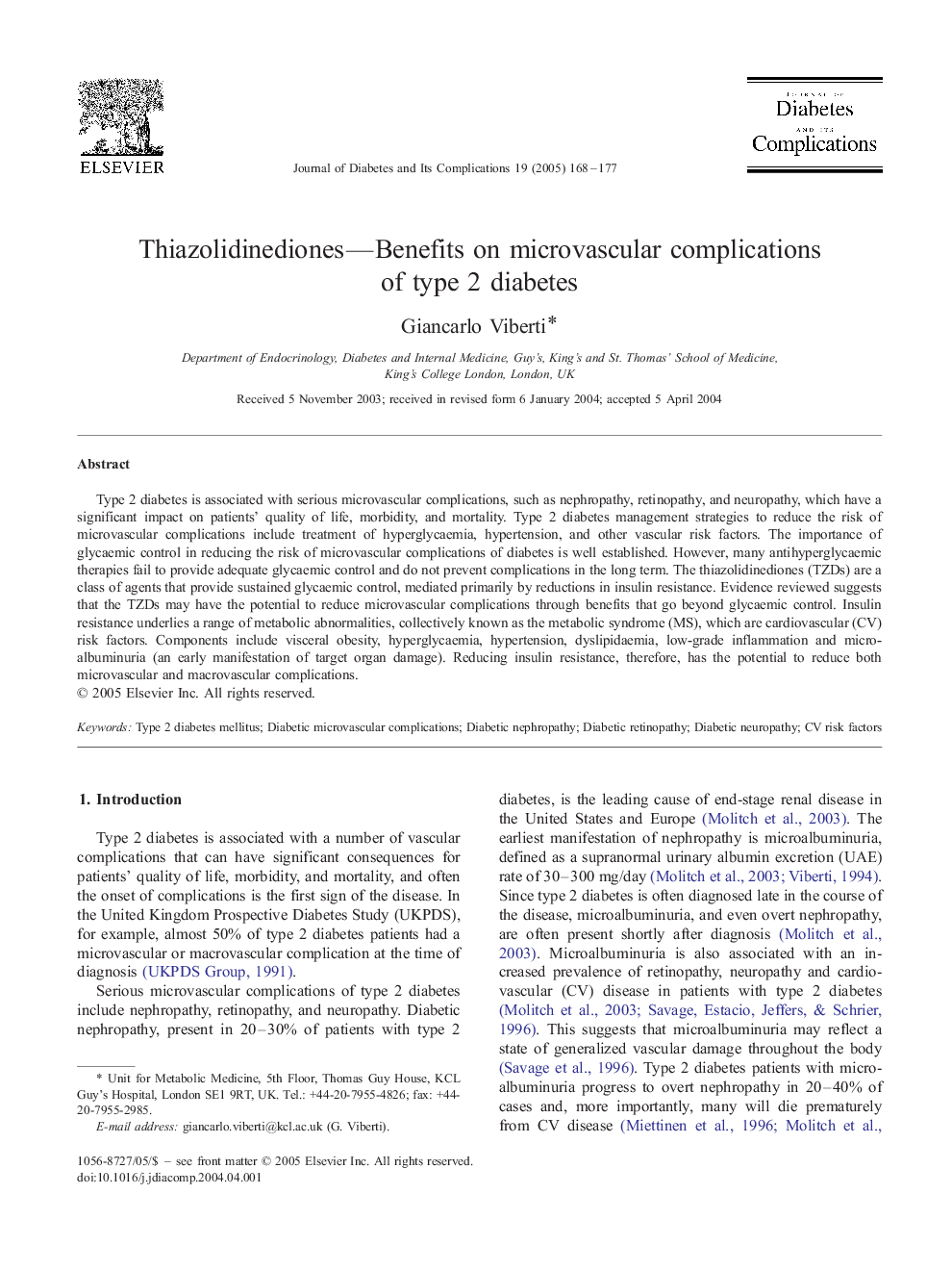| Article ID | Journal | Published Year | Pages | File Type |
|---|---|---|---|---|
| 9115158 | Journal of Diabetes and its Complications | 2005 | 10 Pages |
Abstract
Type 2 diabetes is associated with serious microvascular complications, such as nephropathy, retinopathy, and neuropathy, which have a significant impact on patients' quality of life, morbidity, and mortality. Type 2 diabetes management strategies to reduce the risk of microvascular complications include treatment of hyperglycaemia, hypertension, and other vascular risk factors. The importance of glycaemic control in reducing the risk of microvascular complications of diabetes is well established. However, many antihyperglycaemic therapies fail to provide adequate glycaemic control and do not prevent complications in the long term. The thiazolidinediones (TZDs) are a class of agents that provide sustained glycaemic control, mediated primarily by reductions in insulin resistance. Evidence reviewed suggests that the TZDs may have the potential to reduce microvascular complications through benefits that go beyond glycaemic control. Insulin resistance underlies a range of metabolic abnormalities, collectively known as the metabolic syndrome (MS), which are cardiovascular (CV) risk factors. Components include visceral obesity, hyperglycaemia, hypertension, dyslipidaemia, low-grade inflammation and microalbuminuria (an early manifestation of target organ damage). Reducing insulin resistance, therefore, has the potential to reduce both microvascular and macrovascular complications.
Keywords
Related Topics
Life Sciences
Biochemistry, Genetics and Molecular Biology
Endocrinology
Authors
Giancarlo Viberti,
